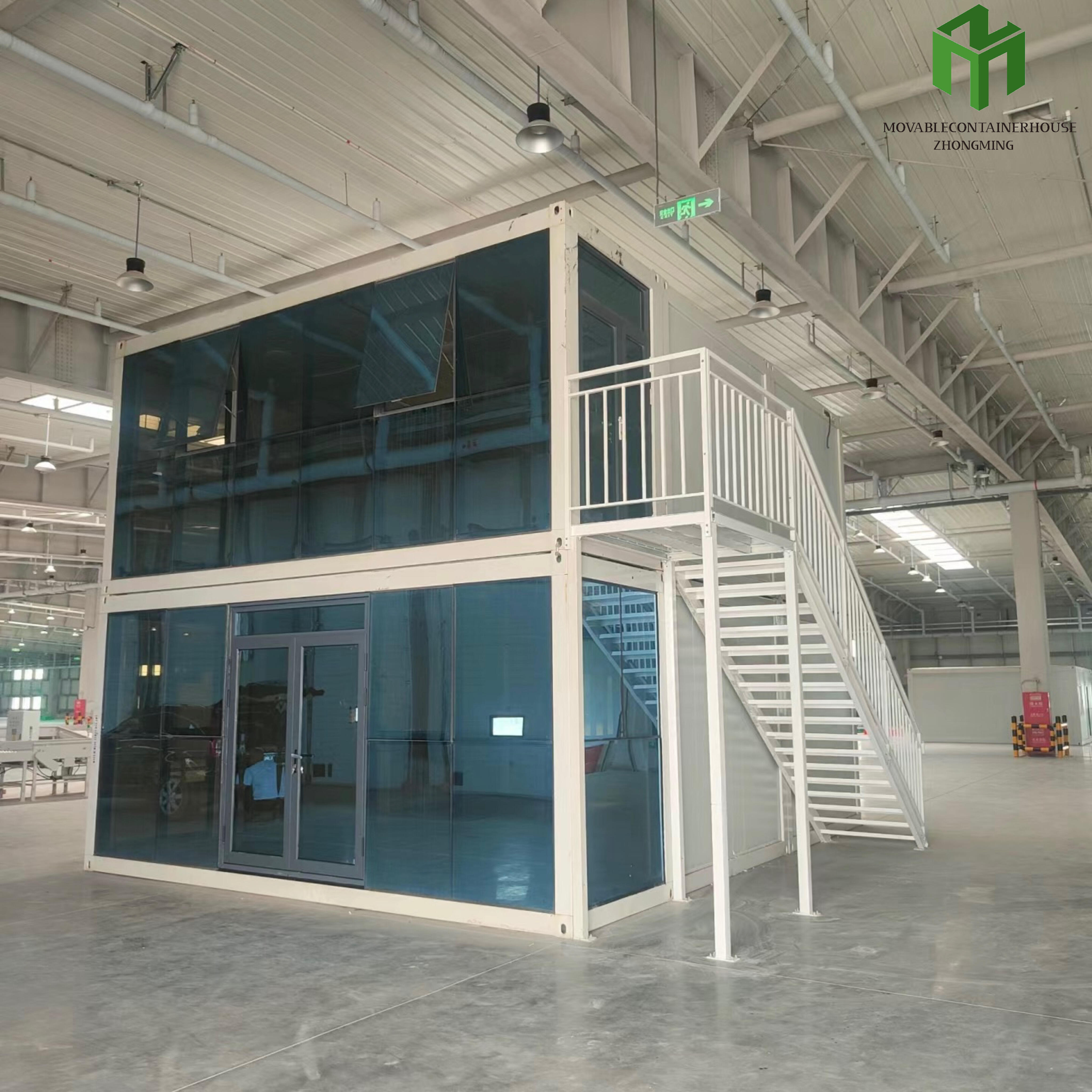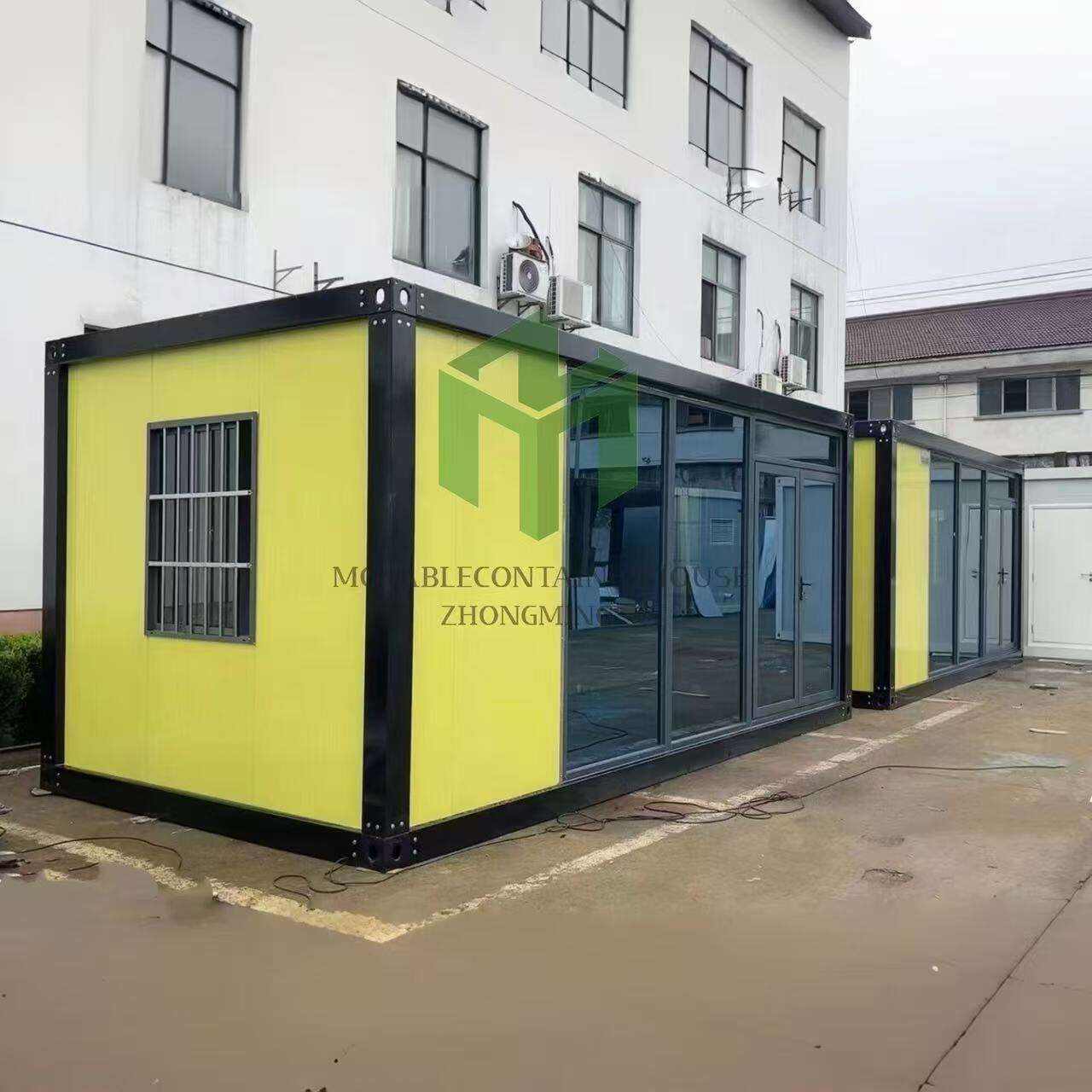The construction and housing industry is experiencing a revolutionary shift as mobile container houses emerge as a dominant force in sustainable and affordable living solutions. These innovative structures, repurposed from shipping containers, are transforming how people think about housing, temporary accommodations, and emergency shelter solutions. The rapid adoption of these versatile buildings reflects changing priorities in modern society, where flexibility, cost-effectiveness, and environmental consciousness drive decision-making processes.
The appeal of container-based housing extends far beyond simple cost savings, encompassing factors such as rapid deployment, structural integrity, and adaptability to various environments. From disaster relief operations to luxury residential developments, these modular structures are proving their worth across diverse applications. The growing popularity stems from their ability to address pressing global challenges including housing shortages, environmental concerns, and the need for quick-deployment infrastructure solutions.
Economic Advantages Driving Market Growth
Cost-Effective Construction Solutions
Traditional construction methods often involve lengthy timelines and unpredictable cost escalations, making mobile container houses an attractive alternative for budget-conscious developers and homeowners. The initial investment for container-based structures typically runs 30-50% lower than conventional building methods, primarily due to the pre-existing structural framework and reduced labor requirements. This significant cost reduction opens homeownership opportunities for demographics previously priced out of traditional housing markets.
Manufacturing efficiency plays a crucial role in maintaining these economic advantages, as containers can be modified in controlled factory environments where weather delays and site-specific complications are eliminated. The standardized dimensions of shipping containers allow for streamlined production processes, bulk purchasing of materials, and optimized workflow systems that further reduce overall project costs. These savings are particularly pronounced in projects requiring multiple units, where economies of scale amplify the financial benefits.
Reduced Maintenance and Operating Expenses
The steel construction of shipping containers provides exceptional durability, resulting in lower long-term maintenance costs compared to traditional building materials. Container structures resist common issues like termite damage, foundation settling, and weather-related deterioration that plague conventional buildings. This inherent resilience translates to reduced repair expenses and extended service life, making them financially attractive for long-term investments.
Energy efficiency improvements in modern container conversions contribute significantly to operational cost savings. Advanced insulation systems, energy-efficient windows, and smart building technologies integrated into these structures often result in 40-60% lower utility bills compared to similar-sized traditional homes. The compact design naturally reduces heating and cooling requirements, while modern HVAC systems optimized for container dimensions provide superior climate control at lower energy costs.
Environmental Sustainability Benefits
Upcycling and Waste Reduction
Environmental consciousness drives much of the enthusiasm surrounding mobile container houses, as these structures represent a prime example of large-scale upcycling. Millions of shipping containers sit unused in ports worldwide after completing their maritime service life, creating a readily available supply of building materials that would otherwise contribute to industrial waste streams. Converting these containers into habitable structures diverts substantial amounts of steel from landfills and scrapyards.
The environmental impact extends beyond waste reduction, as container conversion requires significantly less raw material extraction compared to traditional construction. Manufacturing a new shipping container equivalent from scratch would demand approximately 8,000 pounds of steel, whereas container conversion utilizes existing materials while adding only insulation, fixtures, and finishing materials. This reduction in material demand decreases mining activities, transportation emissions, and manufacturing energy consumption associated with new construction materials.
Carbon Footprint Reduction
Construction activities represent a significant portion of global carbon emissions, making the reduced environmental impact of container housing particularly relevant in climate change mitigation efforts. The streamlined construction process for mobile container houses typically generates 60-70% fewer carbon emissions compared to equivalent traditional building projects. This reduction stems from decreased transportation of materials, shorter construction timelines, and reduced heavy machinery usage on construction sites.
Modern container house designs increasingly incorporate renewable energy systems, green roofing solutions, and water recycling technologies that further minimize environmental impact. Solar panel installations are particularly well-suited to container roofs, providing sustainable energy generation that can make these structures net-positive energy producers. Rainwater harvesting systems and greywater recycling capabilities transform these buildings into self-sufficient micro-ecosystems with minimal environmental footprint.

Versatility and Adaptability Features
Multiple Application Scenarios
The adaptability of container-based structures makes them suitable for an impressive range of applications, from emergency housing and disaster relief to luxury residential developments and commercial spaces. Their modular nature allows for easy reconfiguration, expansion, or relocation based on changing needs. This flexibility proves invaluable in scenarios requiring temporary facilities, such as construction site offices, medical clinics in remote areas, or educational facilities in underserved communities.
Military and government agencies increasingly rely on container-based solutions for rapid deployment of operational facilities in challenging environments. The standardized dimensions ensure compatibility with existing transportation infrastructure, while the robust construction withstands harsh conditions that might damage conventional prefabricated structures. This versatility extends to commercial applications, where businesses utilize modified containers for pop-up retail locations, restaurants, and event spaces that can be easily relocated or reconfigured based on market demands.
Customization Capabilities
Modern manufacturing techniques enable extensive customization options for mobile container houses, allowing owners to create unique living spaces that reflect personal preferences and functional requirements. Interior layouts can be completely reconfigured, with walls removed or added to create open floor plans or compartmentalized spaces. Advanced cutting and welding techniques permit the installation of large windows, skylights, and even second-story additions that transform the basic container shell into sophisticated architectural statements.
External customization options include various siding materials, roofing systems, and architectural elements that can completely mask the industrial origins of container structures. High-end finishes, smart home technologies, and luxury amenities can be integrated to create living spaces that rival or exceed the comfort and aesthetics of traditional homes. This customization potential attracts architects and designers who view containers as blank canvases for innovative residential and commercial projects.
Speed and Efficiency in Deployment
Rapid Construction Timelines
Time-sensitive projects benefit enormously from the accelerated construction timelines achievable with mobile container houses, as the pre-existing structural framework eliminates foundation work, framing, and exterior wall construction phases. A fully equipped container house can typically be completed in 2-8 weeks, compared to 6-12 months for comparable traditional construction projects. This speed advantage proves crucial in emergency situations, commercial deployments, or housing projects with tight deadlines.
The controlled manufacturing environment allows for parallel processing of multiple units simultaneously, further reducing project timelines for developments requiring multiple structures. Weather-independent construction means that interior work can proceed regardless of seasonal conditions, eliminating the delays that commonly affect traditional building projects. This reliability in scheduling provides significant advantages for developers working within strict timeframes or seasonal constraints.
Streamlined Logistics and Installation
Transportation and installation logistics for container-based structures leverage existing shipping infrastructure, making deployment possible in remote or challenging locations where traditional construction materials would be difficult to deliver. Standard shipping containers are designed for efficient transport by truck, rail, or ship, enabling cost-effective delivery to virtually any accessible location worldwide. This logistical advantage proves particularly valuable for projects in developing regions or isolated areas with limited transportation infrastructure.
Site preparation requirements for container installation are minimal compared to traditional construction, often requiring only basic leveling and utility connections. The self-contained nature of these structures means that much of the electrical, plumbing, and HVAC work can be completed off-site in controlled manufacturing environments, reducing on-site installation time and complexity. This streamlined approach minimizes disruption to surrounding areas and allows for rapid establishment of functional facilities.
Quality and Safety Standards
Structural Integrity and Durability
Shipping containers are engineered to withstand extreme conditions during maritime transport, including heavy loads, severe weather, and constant movement, resulting in structures that often exceed building code requirements for residential and commercial applications. The steel framework provides exceptional strength-to-weight ratios and resistance to seismic activity, making container-based buildings suitable for areas with challenging geological conditions. This inherent structural integrity often allows for multi-story configurations and creative architectural designs that showcase the engineering capabilities of container construction.
Corrosion-resistant coatings and treatments applied during container manufacturing provide long-term protection against environmental factors, ensuring decades of service life with minimal maintenance. Modern conversion processes incorporate additional protective measures, including vapor barriers, thermal breaks, and advanced insulation systems that prevent condensation and maintain structural integrity in various climates. These protective systems, combined with the inherent durability of steel construction, result in buildings that often outlast conventional structures while requiring less maintenance intervention.
Building Code Compliance and Safety
Professional container conversion companies ensure that mobile container houses meet or exceed local building codes and safety standards through careful engineering and quality control processes. Fire safety systems, emergency egress requirements, and electrical codes are integrated into the design phase, resulting in structures that provide occupant safety levels comparable to or better than traditional construction. Advanced fire suppression systems, smoke detection networks, and emergency lighting can be seamlessly integrated into container designs.
Seismic and wind load calculations for container structures often reveal superior performance compared to conventional buildings, particularly in areas prone to natural disasters. The low profile and aerodynamic characteristics of container buildings reduce wind resistance, while the steel framework provides excellent earthquake resistance. This superior performance in extreme conditions makes container-based structures increasingly popular in disaster-prone regions where building resilience is paramount for occupant safety and property protection.
FAQ
How long do mobile container houses typically last
Mobile container houses constructed with proper insulation, vapor barriers, and protective coatings typically last 25-50 years or more, depending on environmental conditions and maintenance practices. The steel construction provides exceptional durability, often outlasting many traditional building materials. Regular maintenance of protective coatings and mechanical systems can extend service life significantly, with some container structures showing minimal deterioration after decades of use in various climates.
What permits are required for installing a container house
Permit requirements for mobile container houses vary by location but typically include building permits, electrical permits, and plumbing permits similar to traditional construction projects. Some jurisdictions have specific regulations for container-based construction, while others treat them as standard residential or commercial structures. It is essential to consult with local building authorities early in the planning process to ensure compliance with zoning regulations, setback requirements, and architectural guidelines that may affect container house installations.
Can container houses be connected to utilities like traditional homes
Yes, mobile container houses can be fully connected to standard utilities including electricity, water, sewer, natural gas, and telecommunications services. Professional installations include proper utility connections that meet local codes and safety standards. Many container houses also incorporate alternative utility solutions such as solar power systems, rainwater harvesting, and septic systems for off-grid applications. The compact design often makes utility connections more straightforward and cost-effective than traditional construction projects.
Are mobile container houses suitable for year-round living in all climates
Properly insulated and equipped mobile container houses are suitable for year-round occupancy in virtually all climate zones, from arctic conditions to tropical environments. Advanced insulation systems, climate control technologies, and weatherproofing measures ensure comfortable indoor conditions regardless of external weather. The steel construction provides excellent thermal mass when properly insulated, while modern HVAC systems efficiently maintain desired temperatures. Additional features such as heated floors, advanced air filtration, and humidity control systems can be incorporated for enhanced comfort in extreme climates.


